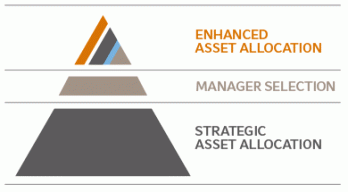
Wealth Management:
This is the common term used to describe the process in which assets are managed in order to build or maintain wealth.
Many people assume that this process is available or useful only for the affluent, but that is not the case. Technology has made most wealth management tools and strategies affordable and available for investors at all levels.
At Adams Financial, we understand that most affluent investors built their wealth using a process that started long before they became wealthy. We have had the opportunity to partner with many families along their journey and we strive to provide enduring value in this area of service for our clients. We find it very fulfilling to help all people better understand how wealth management works and how implementing these financial strategies can make a meaningful difference in their pursuit of their lifetime goals.
There are multiple ways to implement wealth management strategies. We have experienced, licensed associates that serve as brokers with Cetera Advisor Networks LLC, a securities Broker/Dealer. These individuals can facilitate suitable securities transactions (buying or selling investments for clients). We also have experienced, licensed associates that are registered as Investment Advisory Representatives of Cetera Advisor Networks LLC., Registered Investment Advisor. These individuals have the ability to provide investment advice, financial planning services, and actively manage or monitor investment portfolios as a fiduciary on behalf of the clients that they serve.
What’s the difference?

Portfolio Management
We use a combination approach, blending a strategic asset allocation strategy with a tactical sector overlay, specifically seeking to utilize managers that have proven to deliver intended results to their shareholders.
We establish specific standard deviation targets that seem appropriate for the various levels of risks that investors may target. For example, an aggressive investor may target a portfolio standard deviation of 40% and a more conservative investor may target a standard deviation of only 10%. With these SD targets in mind, we then analyze historical asset class correlations to arrive at a series of investment models where the historical return per unit of risk can be maximized at each specific SD target. This results in a baseline static asset allocation prescribed for each level of targeted risk (aggressive, moderate aggressive, moderate growth, total return, balanced, income, inflation protection, and market tactical).
We then look at each asset category represented in each model, make an ongoing assessment of the category’s average valuations and current macro factors influencing each asset class. As we determine that specific asset classes are priced above or below what we believe to be their intrinsic values, we then bias more or less ownership of these assets compared to our static targets.
If we believe that an asset class is undervalued on a risk-adjusted basis, we may significantly increase the exposure to that class up within the overall framework of our models by utilizing specific managers known to bias these sectors in their investment management process. Likewise, if we believe that an asset class is overvalued, we may significantly decrease exposure to that class (or hedge against risk within the portfolio), and/or avoid managers that tend to bias these specific sectors.
In each of our investment disciplines, we consistently evaluate long standing managers and build working relationships with these management teams that help us to execute and deliver targeted risk/return portfolios for our clients. All investing involves risk, including the possible loss of principal. There is no assurance that any investment strategy will be successful.
